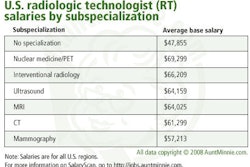Dear AuntMinnie Member,
There's no question that times for radiology groups are tough. The combined weight of reimbursement reductions, constant turf battles with other specialties, and the threat of competition from teleradiology firms have many groups ready to "explore strategic alternatives," as they say in the business world.
One such alternative has radiology groups seeking strength in numbers by merging with other physician groups -- even those comprising nonradiologists. This radical step has a number of pitfalls. But if it's one of your last options, don't make a move before reading the latest article by staff writer Kate Madden Yee in our Imaging Center Digital Community.
Many mergers between radiology and nonradiology groups are sparked by control and economic issues rather than more traditional legal and regulatory factors, according to the story. But they can succeed if all parties involved address such issues at the beginning of the merger process. Find out what else you should do by clicking here, or visit our Imaging Center Digital Community at imaging.auntminnie.com.
New PET probe
In news from our Molecular Imaging Digital Community, staff writer Wayne Forrest reports on new research at the University of California, Los Angeles in which investigators have developed a new PET radiotracer for monitoring the immune system at a whole-body level.
Researchers hope the probe could aid in the diagnosis and treatment of immunological disorders. Current studies are under way in animals, and the researchers hope to begin clinical trials in humans shortly. Get more details by clicking here, or visit the Molecular Imaging Digital Community at molecular.auntminnie.com.



















